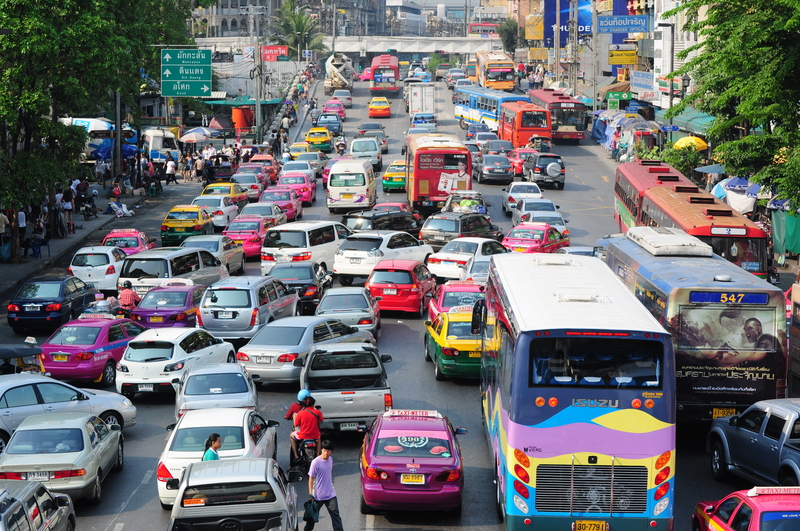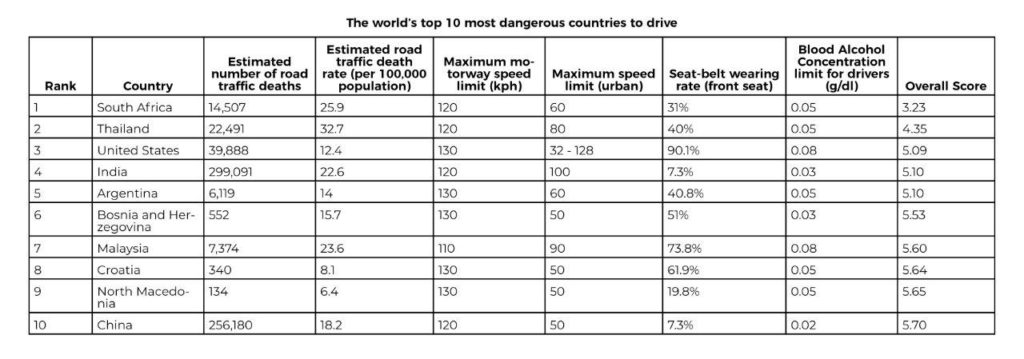
It’s estimated that two persons are killed and approximately forty people are injured every minute on roads around the world so in which parts of the world are you most likely to be involved in an accident?
To answer this question and to reveal the world’s safest and unsafest countries to drive in, Zutobi Drivers ED has analyzed countries globally on various factors. The factors include the number of road deaths, maximum speed limits, and the number of people who wear a seat belt.
The research revealed that Thailand is the second unsafest country in the world to drive in, just after South Africa that ranked 1st on the index. Thailand reports the highest number of deaths on the roads, with 32.7 deaths per 100 000 people, and overall around 25.000 lives are lost in traffic in Thailand yearly. Only 40 percent use the front seatbelt in Thailand and the country has often chaotic streets with poorly maintained roads. Thailand has a max speed limit of 120km/h on motorways and a relatively lenient drink-drive limit of 0.05g/dl.
Other Asian countries ranking within the world’s top 10 most dangerous countries to drive in is Malaysia on the 7th place and China ranks as the 10th unsafest country in the world to drive in.

Zutobi Drivers ED’s research also revealed that Norway came out as the world’s safest country to drive in. Norway reports only 2.7 fatalities on the roads per 100 000 people, which is fewer than any other country (and over ten times fewer deaths than in the likes of Thailand!). Norway had one of the highest levels of people wearing seat belts, with 95.2% and the country has a max speed limit of 110km/h on motorways and a strict drink-drive limit of 0.02g/dl.

Sweden ranks as the world’s third safest country to drive in and Iceland ranks 5th safest country in the world to drive in.


This report is rubbish!
It rehashes old, limited statistics and comes to highly dubious and subjective conclusions.